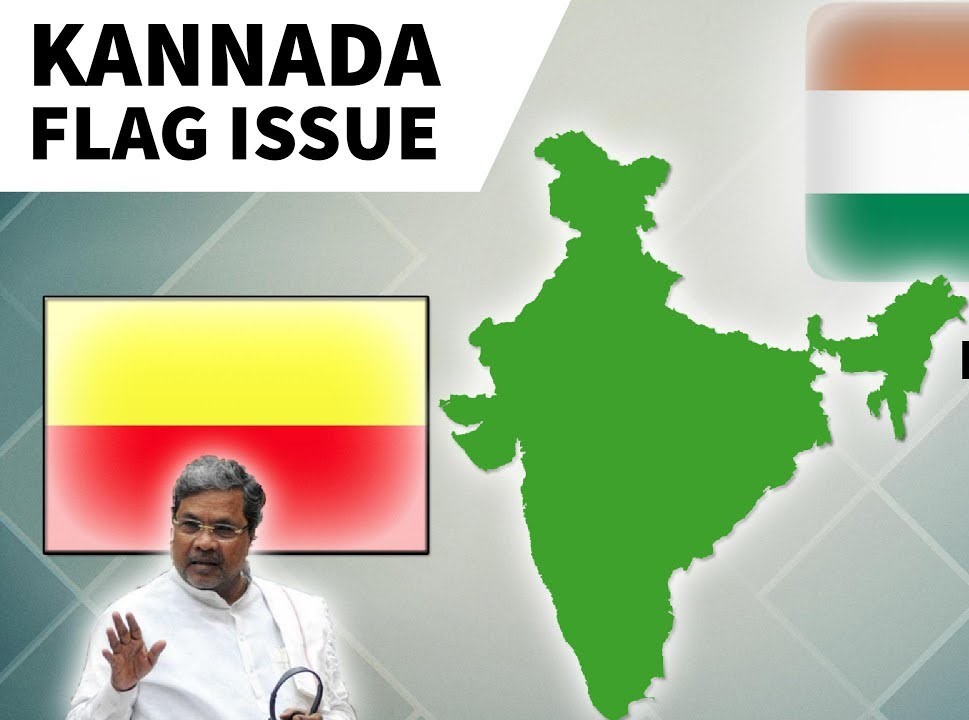Demand for State Flag - Karnataka Flag issue
The Congress-led government in Karnataka has constituted a nine-member committee to design a state flag and submit a report on its legal sanctity. The trigger for state flag is from above without any demand or pressure from the below i.e. people. Karnataka has recently been in news over anti-Hindi protests over the use of Hindi language on signboards… Read More »

The Congress-led government in Karnataka has constituted a nine-member committee to design a state flag and submit a report on its legal sanctity.
The trigger for state flag is from above without any demand or pressure from the below i.e. people. Karnataka has recently been in news over anti-Hindi protests over the use of Hindi language on signboards in Bengaluru metro stations — a move that was seen as language imposition.
The demand for separate flag is not first of its kind by Karnataka.
J&K has its own flag. The separate flag for Nagas is one of 33 demands made by the NSCN(IM), which has been engaged in talks with the central government since a truce was finalised in 1997. Karnataka has already had an unofficial state flag since the mid-1960s, created by Kannada writer and activist M. Ramamurthy for a pro-Kannada political party called the Kannada Paksha.
This move by the government now is just to give the flag a legal sanctity. A rectangular flag split into two horizontal halves coloured light yellow at the top and red at the bottom. The yellow connoted peace and friendship and symbolised the State as a land of gold, and the red a fighting spirit.
The Constitution does not prohibit a state from having a separate state flag.
In S.R. Bommai v. Union of India (Supreme Court 1994) case, the Supreme Court declared that there is no prohibition in the Constitution for the state to have its own flag. However, the manner in which the state flag is hoisted should not dishonour the national flag. It has to be always below the national flag. Detractors have charged CM of Karnataka being “anti-national” and “seditious”.
Shiv Sena has demanded imposition of President Rule and immediate suspension of the state government. The recent pro-Hindi moves of the Central government in particular have deepened linguistic anxieties. The External Affairs Ministry’s decision that Indian passports will record details in Hindi alongside English Personnel Ministry’s desires that the use of colloquial Hindi in “routine conversations in government offices” goes up continue to offer a privileged status for Hindi.
Other Key Points
- Former editor of the RSS’s Hindi weekly, Panchjanya, denying that the attacks on African students could be racist are illustrative: “If we were racist, why would we have the entire south. Tamil, Kerala, Karnataka and Andhra… why do we live with them? We have black people around us.”
- Bharatiya Jana Sangh, in 1952 came up with the idea of ek vidhan, ek pradhan, ek nishan (one constitution, one prime minister, one flag). This is when the Sangh had started demanding full integration of Jammu and Kashmir with India, and abolition of the Article 370.
- Perceptions that the new “north Indian” settlers in the State are indifferent to learning Kannada and insist that the others speak in Hindi also underlay the recent protests against the use of Hindi signs in the Bangalore Metro.
- Be it flags, or any other symbol, the non-Hindi-speaking regions of India will come up with creative ways of fighting for their cultural freedom. Being sensitive towards their concerns is a precious obligation of a federal polity.
- Sub-nationalism and regional identities many a times don’t necessarily synchronize with the homogenized national identity. If states have their own flags, it is the recognition of the diversity of India. And by recognizing the regional identity, you are also making the national identity stronger.
Analysis By – Wakeman Neutron

